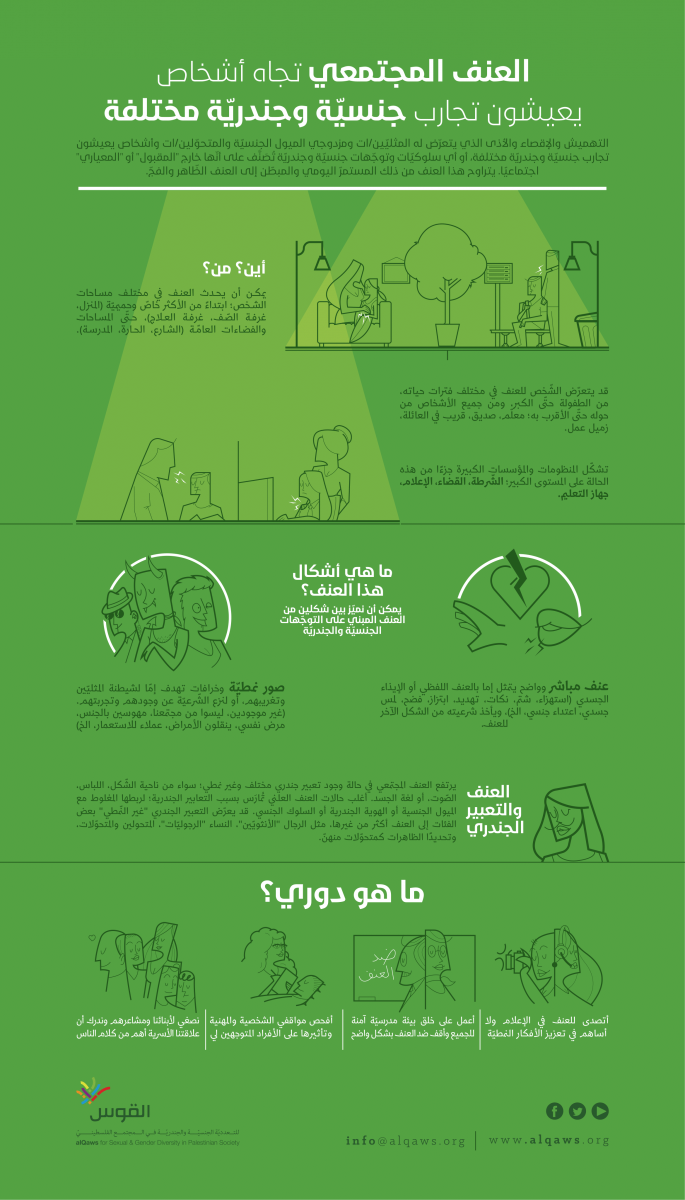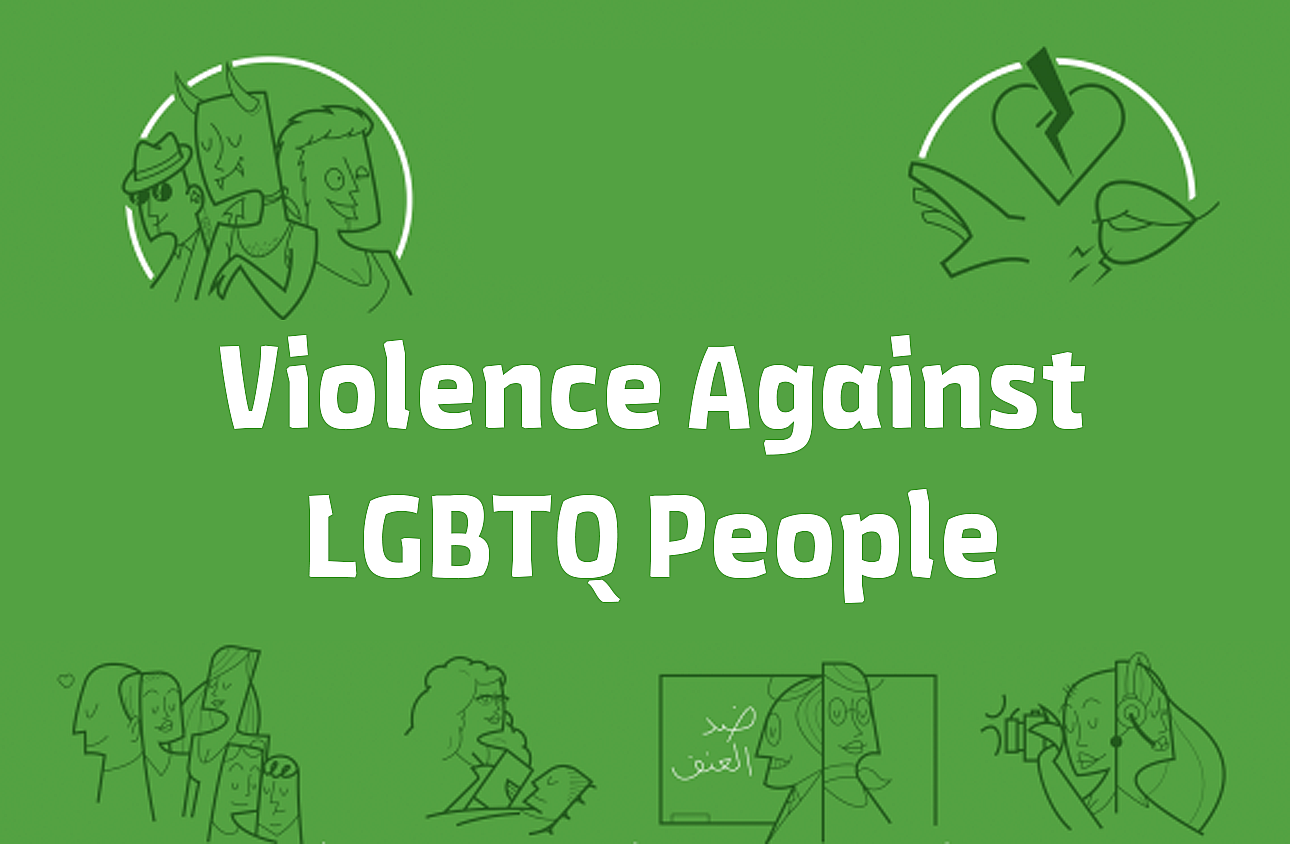"Violence Against LGBTQ People"
What?
The marginalization, exclusion, and harm faced by LGBTQ individuals as well as people with any sexual or gender orientations, behaviors, or expressions considered non-normative or socially unacceptable. It ranges from ongoing daily implicit violence, to the more explicit and more direct.
When? Who?
-
Violence could occur anywhere, from the most intimate places (at home, in a classroom, in therapy), to the most public spaces (in the street, the neighborhood, the school yard).
-
A queer person can face violence at any stage in life, from early childhood to adulthood, and from any person, even those who they are closest to: a teacher, a friend, a relative, or a coworker.
-
Social and state institutions can be a huge part of this problem: the police, the judicial system, the media, or the education system.
What does it look like?
-
Myths and stereotypes that aim to demonize queer people, or to delegitimize their existence and their experiences. (“they don’t exist”, “not from our society”, “obsessed with sex”, “mentally ill”, “spread diseases”, “collaborators with Israel”, etc)
-
Direct and explicit violence: verbal and physical violence that is legitimized by the first form of violence. (insults, jokes, mocking, blackmail, physical touch, sexual assault, etc)
Violence and gender expression
Violence tends to be more explicit when witnessing non-normative gender expressions, whether in terms of physical appearance, clothing, voice, or body language. From our experience, we can say that most cases of violence are perpetrated based on gender expression, due to mistakenly correlating it to sexual orientation, gender identity, or sexual behavior.
Gender nonconforming individuals can face more violence than others because of their non-normative gender expression, including “feminine”-presenting men, “masculine”-presenting women, and trans folks, specifically trans women who are considered “non-passing”.
What’s my role?
-
As a journalist, I challenge stereotypes in the media, and I refuse to be complicit.
-
As a therapist, I examine my personal and professional attitudes and how they affect the people seeking my help.
-
As an educator / teacher, I foster a safe school environment for all my students, standing firmly against violence.
-
As a family / parents, we listen to our children and their feelings, and realize that our relationship is more important than other people’s opinions.
The poster appears below in Arabic.

